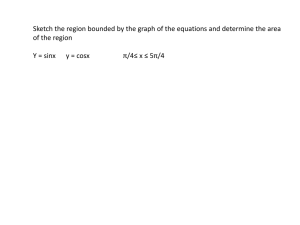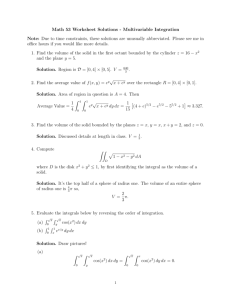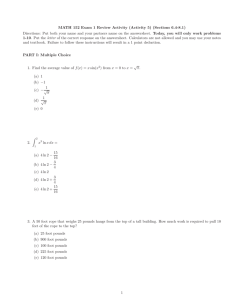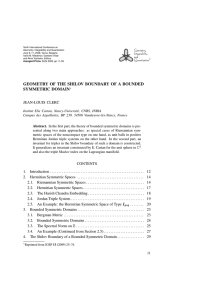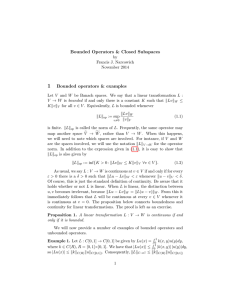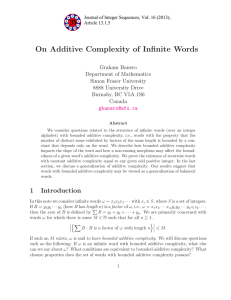Properties of lines
advertisement
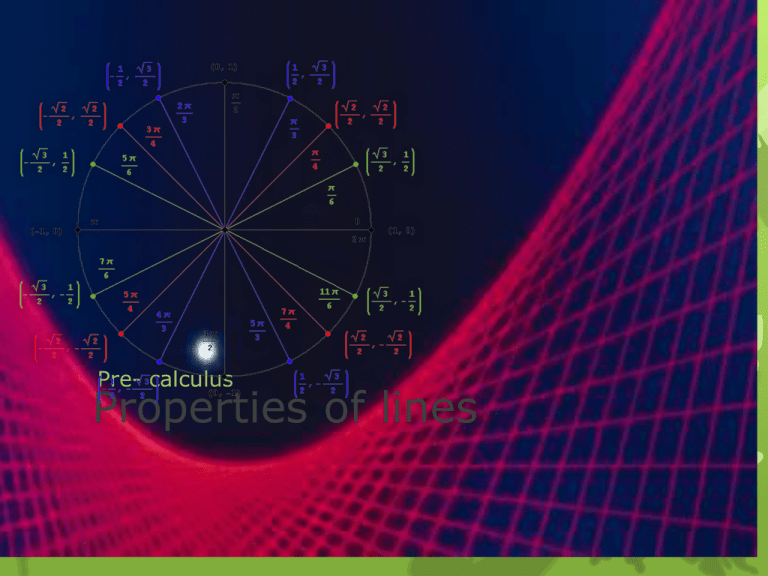
Pre- calculus Properties of lines Slope The slope m of the line through the points (x1, y1) and (x 2, y 2) is given by Point slope :The straight-line equations is called the "point-slope" y – y1 = m(x – x1) 12 basic functions and graphs the twelve functions Identity Function, Squaring function, Cubing Function, Square Root Function, Reciprocal Function, Exponential Function, Natural Logarithm Function, Sine Function, Cosine Function and the Logistic Function Cont… Some of the best ways to describe the functions are the following . domain: the set of the values were we take the x values, continuous: were every point in the graph as a value bounded: the graph lies in two horizontal lines (A graph can be bounded above or below or completely bounded.) even: the function of the graph will be symmetric with the y-axis odd: the main function of the graph will always be symmetric with its origin increasing: the graph is going upward as it moves from left to right decreasing: the function's is going downward as it moves from left to right oTRANSFORMATIONS The different types of transformations are the following: - Translation - Reflection - Point Reflection - Rotation - Dilation A trabsformation is just a moving shape that will have a different position as the original one ,but still stay with the same size, area, angles, and line lengths The following formulas well help you solve for the shifts, reflection, transformation, vertical shift and all that good stuff. • • • • • • VERTICAL AND HORIZONTAL SHIFTS Suppose c > 0 . To obtain the graph of y = f (x) + c : shift the graph of y = f (x) up by c units y = f (x) − c : shift the graph of y = f (x) down by c units y = f (x − c) : shift the graph of y = f (x) to the right by c units y = f (x + c) : shift the graph of y = f (x) to the left by c units • _ REFLECTIONS To obtain the graph of y = − f (x) : reflect the graph of y = f (x) about the x-axis y = f (−x) : reflect the graph of y = f (x) about the y-axis Example #1 Example from purple math For F(t) = Af(Bt – C)+D, where f(t) is one of the basic trig functions, we have: A: amplitude is A B: period is (2π)/|B| C: phase shift is C/B D: vertical shift is D This is an example of a vertical strach graph from Pearson's calculus website


